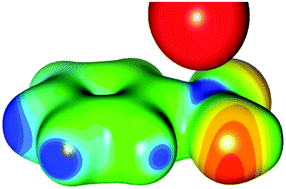In an effort to describe π-hole interactions, we undertook accurate high-resolution X-ray diffraction analyses of single crystals of 1,4-dinitrobenzene, a co-crystal of cis-tartaric acid and bis-pyridine N-oxide and the hydrochloride of B-4-pyridinylboronic acid. We selected these three compounds owing to the π-hole accessibility features that the sp2 hybridized B, C and N atoms provide, thus allowing us to compare the fundamental characteristics of π-hole interactions using Bader’s Atom in Molecules (AIM) theory. This particular study required extremely accurate experimental diffraction data, because the interaction of interest is weak. As shown by the experimental charge density maps of the –YO2 (Y = B, C, N) units, we assign the depletion of electron-density present in the central boron, carbon and nitrogen atoms (electrophilic π-holes) as the main origin for the establishment of intermolecular Lewis acid–Lewis base attractive interaction with complementary electron-rich regions. Unexpectedly, the Bader’s analyses of both experimentally and theoretically calculated charge distribution maps for the solid involving the – BO2H2 group do not show the presence of bond paths, neither of the bond critical points, between the interacting electron rich sites and the boron or carbon atoms featuring the electron hole. In contrast, these topological descriptors of chemical interactions for the AIM theory were easily located in the solid-state structures of the compounds involving the carboxylic and the nitro groups.
